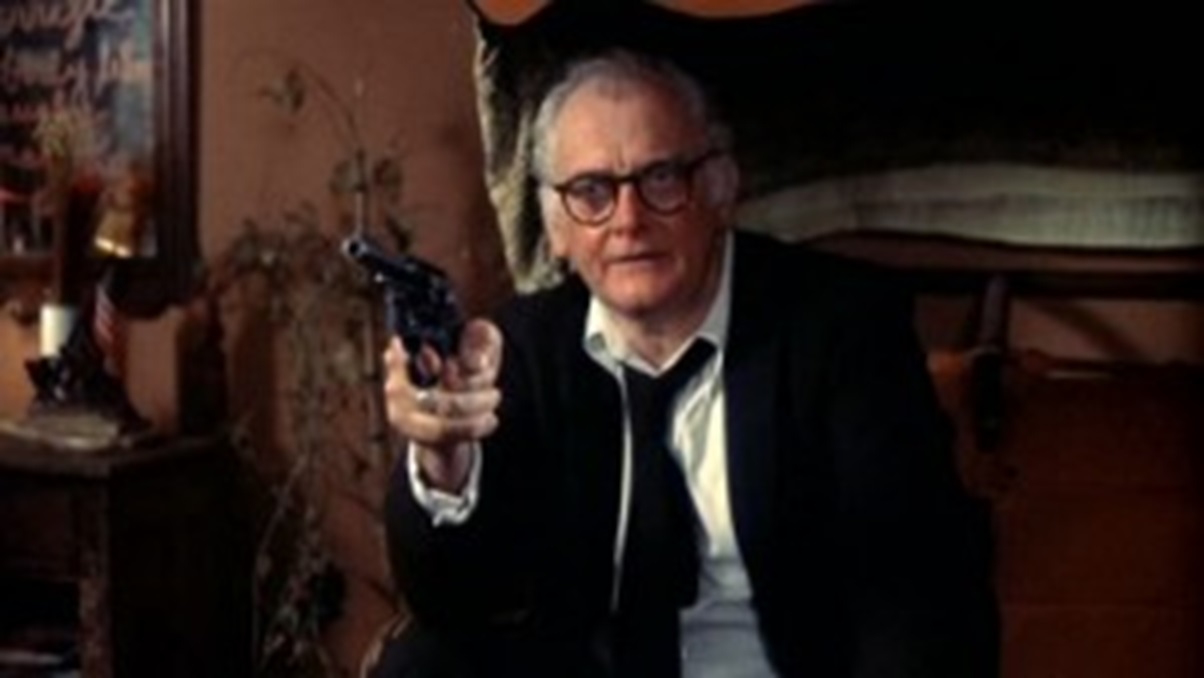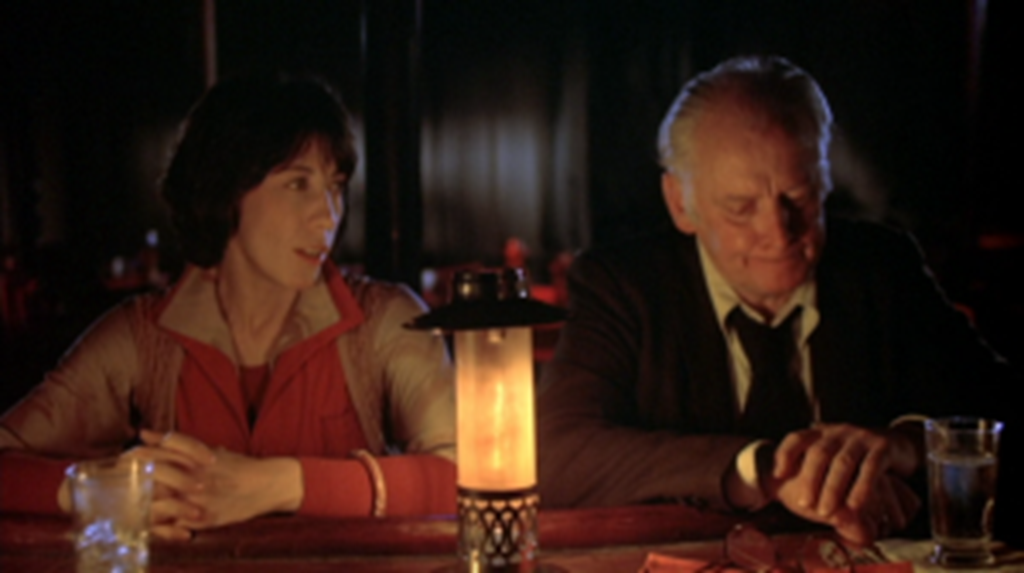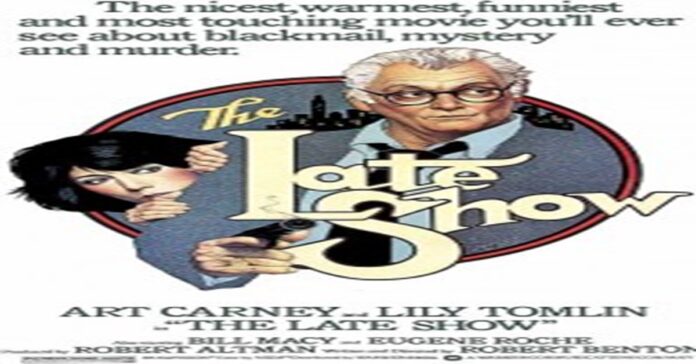“The Best Movies You’ve Never Heard Of” series features articles focusing on outstanding but lesser-known films.
These movies are of remarkable quality and are likely recognized by avid film enthusiasts, yet have not gained widespread attention from the general public.
The Best Movies You’ve Never Heard Of
In the late 1960s and early 70s, “film noir” was a term that only dedicated classic cinema enthusiasts were familiar with, and urban-based mystery films featuring cynical, tough private detectives were seen as outdated.
Despite failed attempts to revive Raymond Chandler’s iconic detective Philip Marlowe with movies like Marlowe and The Long Goodbye, it wasn’t until Roman Polanski’s Chinatown became a significant hit in the summer of 1974 that private eye mysteries experienced a brief resurgence in both movies and television.
This led to a trio of films released by Warner Brothers that were particularly noteworthy: Arthur Penn’s Night Moves (1975), Stuart Rosenberg’s The Drowning Pool (1975), and Robert Benton’s The Late Show (1977).
Among these, The Late Show was a unique film that defied being labeled as another Chinatown knock-off.
Set in the colorless Los Angeles of 1977, the film was haunted by memories of the 1940s, creating a nostalgic yet contemporary atmosphere.
The main character, ex-gumshoe Ira Wells, portrayed by Art Carney, embodied a desire to live out his remaining years in peaceful retirement, reflecting a touch of the filmmaker’s father’s persona, who preferred a quiet life over medical interventions for his health issues.

Also, see Movie-Watching Memories: The Quo Vadis
Robert Altman, the producer of The Late Show, regarded it as a sort of sequel to his own The Long Goodbye, complete with certain similarities such as the appearance of the homicide detectives Dayton and Green and the similarity in attire between the characters in both films.
Altman even joked about remaking The Long Goodbye until he got it right during an interview related to the release of The Late Show.
After winning the Best Actor Oscar for his performance in “Harry and Tonto” (1974), Art Carney delivered an even more exceptional performance in a unique role in “The Late Show”.
Despite his previous acclaim for his role as Ed Norton on “The Honeymooners,” Carney had never been cast as a rigid or former tough guy before.
His portrayal was influenced by his physical limitations, which added to the suspense in the film. Carney’s versatility in both comedy and drama was evident in this remarkable performance.
Lily Tomlin, a talented and distinct actress who had previously earned a Best Supporting Actress nomination for Altman’s “Nashville” (1975), portrayed Margo Sperling in “The Late Show”.
Margo’s character was a disillusioned former Hollywood aspirant, a burnt-out “flower child,” and a quirky individual on the verge of becoming a reclusive cat lady.
Despite struggling to make a living by working as a freelance clothes designer and a manager for performers of questionable talent, along with occasionally selling marijuana, Margo was depicted as a free-spirited character reminiscent of Woody Allen’s “Broadway Danny Rose”.
Some considered Tomlin’s portrayal of Margo in the film her best performance. (Carney and Tomlin were considered deserving of Oscars for their roles in The Late Show.)
Initially, there was tension between Carney and Tomlin, primarily because Altman and Benton allowed Tomlin to improvise freely during scenes.
According to fellow cast member John Considine, “Art had a lot of trouble with Lily, because of her improvising.”
Carney, a traditional actor who believed in strict adherence to the script, had previously faced challenges with actors who deviated from it, particularly Gleason and Walter Matthau.
However, Carney eventually came to appreciate Tomlin’s professionalism and Benton’s encouragement to improvise.
The film “The Late Show” begins with a sepia-toned depiction of the 1940s version of Warner Brothers’ “shield” logo.
Instead of the familiar musical fanfare by Max Steiner, the audience hears a nightclub applauding and a piano playing the initial notes of the movie’s theme song, a seductive torch song titled “What Was,” composed by Wannberg with lyrics by Stephen Lerner, and performed by Bev Kelly.
When the film begins, the scene is not in a nightclub; instead, it is set in Ira’s humble rented room, with a typewriter on his desk and a framed photo of actress Martha Vickers.
While the credits are displayed, the camera takes in the surroundings, including old photos taped to a mirror. As the credits and the song conclude, the camera settles behind Ira as he sits at his desk.
The subsequent shot shows Ira reading a newspaper, pencil in hand, with an old movie portraying a World War I dogfight playing on a portable black-and-white television set in the background.
Late at night, Ira is interrupted by a knock on his door. His elderly landlady, Mrs. Schmidt, informs him that he has a visitor.
When Ira opens the door, he finds Mrs. Schmidt and his former partner, Harry Regan, who appears disheveled.
Ira assumes Harry is drunk due to his appearance, but when Harry tries to speak, he only coughs up blood. Amidst Mrs. Schmidt’s screams, Ira urgently calls for the police and an ambulance.
He then helps Harry to his bed, where he discovers a gunshot wound under Harry’s raincoat, which is causing him to bleed profusely.
Harry: “It’s not as bad as San Diego… Ira, I have a business opportunity for us…”
Ira: “Harry, who is responsible for this?”
Harry: “It’s a chance for us to make a lot of money…”
Ira: “Harry, you’re dying. Who did this? How did it happen?”
Harry: “Don’t worry, Ira. I’m including you. It’s a fair deal. Just don’t try to intimidate me. It won’t work. I’ll explain everything to you. Just get me to a hospital…”
Ira: “Damn you, Harry! Allowing someone to approach you and shoot you like that, at close range. No one can conceal a .45. Good Lord! You never had the sense of a common dog!” (sadly) “I’m sorry to see you go, pal. You were great company. The best.”
Harry: (attempts to speak, then breathes his last)
Ira: “The very best.” (sighs)
On the day of Harry’s funeral, Ira says his goodbyes to the mourners and prepares to leave the cemetery.
He is intercepted by an old acquaintance, Charlie Hatter, a sleazy promoter, talent agent, and part-time bartender.
Charlie introduces Ira to Margo, who requests Ira’s help finding her cat, Winston, who has been taken by a thug named Brian, to whom she owes $500.
When Ira suggests that she simply pay Brian, Margo becomes upset by his lack of interest and offers him a mere $25 for the job.
Despite his frustration, Ira maintains his composure, acknowledges Charlie’s presence at Harry’s funeral, and advises him to teach Margo to respect her elders.
He then walks away, leaving Margo pleading with him while waving a photo of Winston and lamenting, “This little kitty’s just a little honey bun! Give this little cat a break!”
Later that day, Ira encounters Charlie at the shoeshine stand in the rundown building where his office is located.
Ira questions Charlie about their long absence from each other and expresses suspicion about Charlie’s sudden appearance at Harry’s funeral with Margo and her cat predicament.
Charlie explains that Harry was the first investigator Margo hired to find her cat.
Ira then proceeds to Margo’s apartment in La Paloma. He solemnly declares, “Harry Regan was a close friend of mine for nearly twenty-four years.
Whoever is responsible for his death will regret it deeply.” This statement reflects Ira’s determination to find his partner’s killer, drawing intentional parallels to Dashiell Hammett’s The Maltese Falcon.
The Late Show carries undertones reminiscent of the iconic private eye saga.
Margo discloses that the catnapper’s name is Brian Hemphill, describing him as “a bit of a lowlife.”
She explains that she used to transport stolen goods for Brian and his associate and borrowed the final payment for one of the items. Ira carefully assesses Margo at that moment.
“In the 1940s, this city was teeming with women like you, attractive cocaine users, trying their best to act tough.
Let me tell you, they did it better back then. This city doesn’t change. They shuffle the names around. The same women, messing up their lives in the same ways.”
Ira instructs Margo to arrange a meeting the next time Brian contacts her and leaves it at that.
The meeting turns into a disaster. Charlie and Margo arrive at Mrs. Schmidt’s house with alarming news: Margo informed Brian over the phone that Ira was coming after him, and now Brian is on his way, armed and dangerous.
“Brian isn’t very bright,” Margo explains, “In fact, he’s rather primitive.” Ira promptly retrieves his old revolver and loads it.
However, as Brian approaches the house, he is confronted by another man who shoots and kills him before fleeing in a car.
Ira goes outside to pursue the killer, aiming his gun at the fleeing car while lowering his hearing aid (a striking image).
One of his shots punctures a rear tire, causing the car to crash and burst into flames, but the murderer still manages to escape on foot.

While waiting for the police, Ira demands that Charlie hand over “whatever you took from the deceased.”
(“Jesus, kid, you always were the best,” Charlie admiringly remarks, then turns to Margo and adds, “Didn’t I say he was the best?”)
The “whatever” is a small leather folder containing rare stamps. Ira quickly makes a connection.
Ira: “The Whiting job.”
Margo: “What? Who?”
Ira: “About ten days ago, somewhere out in the valley.”
Margo: “Whiting? Who is that?”
Ira: “That Whiting had a stamp collection worth almost fifty grand.”
Margo: “Who is that? Who’s Whiting?”
Ira: “There’s a murder connected to it, right?”
Margo: “Okay, don’t tell me. What do I care?”
Ira: (patiently, as if explaining to a child) “Two men broke into a house in the valley. They tied up Whiting and his wife and started to steal the stamps. Then something must’ve gone wrong because they assaulted Whiting and killed his wife.”
Margo: “Oh, how disgusting! I don’t want to hear any more.”
After Ira threatens to hand him over to the authorities, Charlie confesses: Harry uncovered information about Brian and his partner carrying out the Whiting robbery while searching for Margo’s cat.
Harry and Charlie planned to report them to the police and share the fifteen-thousand-dollar reward offered by the insurance company for the stolen stamps.
Someone involved in the crime discovered Harry’s intentions, leading to Harry’s untimely demise.
Following this revelation, Ira’s investigation leads him to Ronnie Birdwell, a sleazy dealer in stolen goods and black market items.
Birdwell’s descriptions of the illicit merchandise he deals with resemble items from a department store catalog. Accompanying Birdwell is his sadistic yet meticulously neat enforcer, Lamar.
In his commentary on The Late Show, screenwriter Josh Olson describes Lamar as “a gunsel in every sense of the word; look it up.”
Additionally, Birdwell has an unfaithful, promiscuous wife named Laura, who embodies the obligatory femme fatale in this film noir.
As Ira delves deeper into his investigation, the body count rises, with one corpse being found inside a refrigerator, and the deceptions and betrayals he uncovers multiply.
Despite the grim discoveries, the good news is that Winston is found unharmed, although Margo is concerned about the potential trauma he may have experienced while in the hands of murderers.
Throughout these events, the initial hostility between Ira and Margo transforms into a genuine friendship stemming from their mutual respect and resourcefulness.
Their bond strengthens further after successfully evading pursuit in a high-speed car chase orchestrated by a couple of thugs.
Margo: “Ira, I feel so euphoric. I mean, incredibly euphoric, I can’t even explain it. I feel like I’ve taken acid, have you ever taken acid?”
Ira: “Well, not in the last ten minutes.”
Margo: “You know, I get this sensation, I mean, can you sense anything different about me, like my expression, do you see a different expression on my face?”
Ira: (deadpan) “You look more euphoric.”
Margo: “I look euphoric? Do I, right now? Well, I am euphoric. I’m telling you, I am euphoric.”
In this vein, Margo suggests obtaining a private investigator’s license so she and Ira can start a business together.
Margo: “I feel like The Thin Man.”
Ira: “Who?”
Margo: “You know, Phyllis Kirk and Peter Lawford.”
The apartment next to Margo’s appears unoccupied, prompting her to consider using it as the office for their new detective agency.
However, Ira, being the solitary individual he is, dismisses the idea, leading to a poignant moment in the film as Margo struggles to conceal her disappointment and prevent herself from breaking down.
In the climactic scene, all suspects gather in Margo’s apartment.
The film incorporates a stylish visual element as the camera performs a 360° turn around the apartment, capturing the anticipation of those present as they await Ira and Mrs. Birdwell’s arrival.
Following the conventions of a mystery movie, Ira presents all the evidence and explains the actions of each individual, resulting in the culprits facing imprisonment or joining Harry in the cemetery.
It would have been addressed in Benton’s proposed sequel, “The Late Late Show,” where Ira would have moved into the empty apartment next to Margo’s, and they would have opened the detective agency she had envisioned.
The uniformly positive reviews for “The Late Show” would have justified continuing Ira and Margo’s adventures. Still, unfortunately, Warner Bros. poorly promoted the film, causing it to fade into undeserved obscurity quickly.
In 2004, Warner Home Video released an essential DVD of “The Late Show,” containing only the theatrical trailer and a brief 1977 television clip of Tomlin promoting the movie.
Reviews of the DVD mentioned complaints about the print looking “grainy” and the colors being faded, but the deliberate nature of these aspects is consistent with Altman’s filmmaking style.

